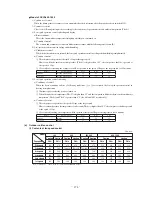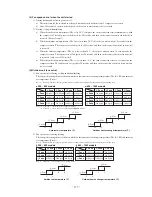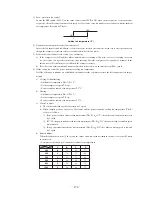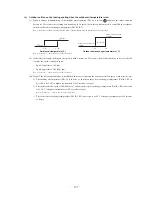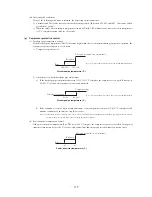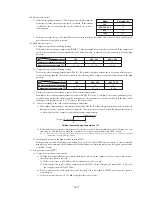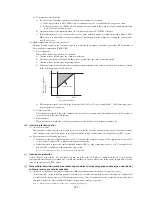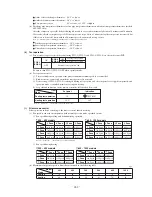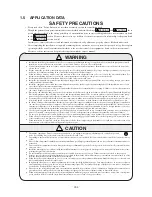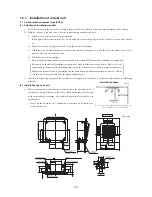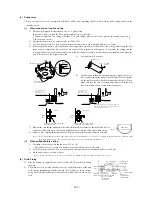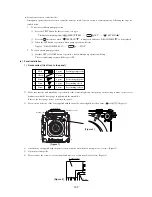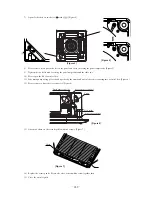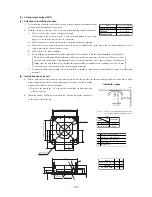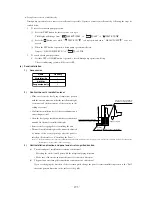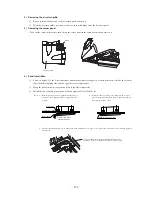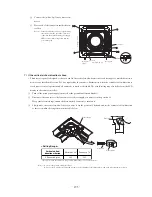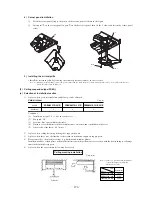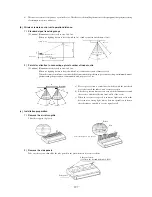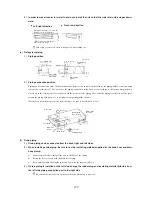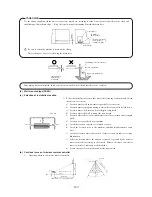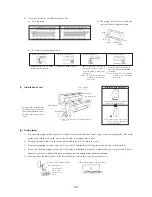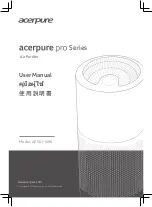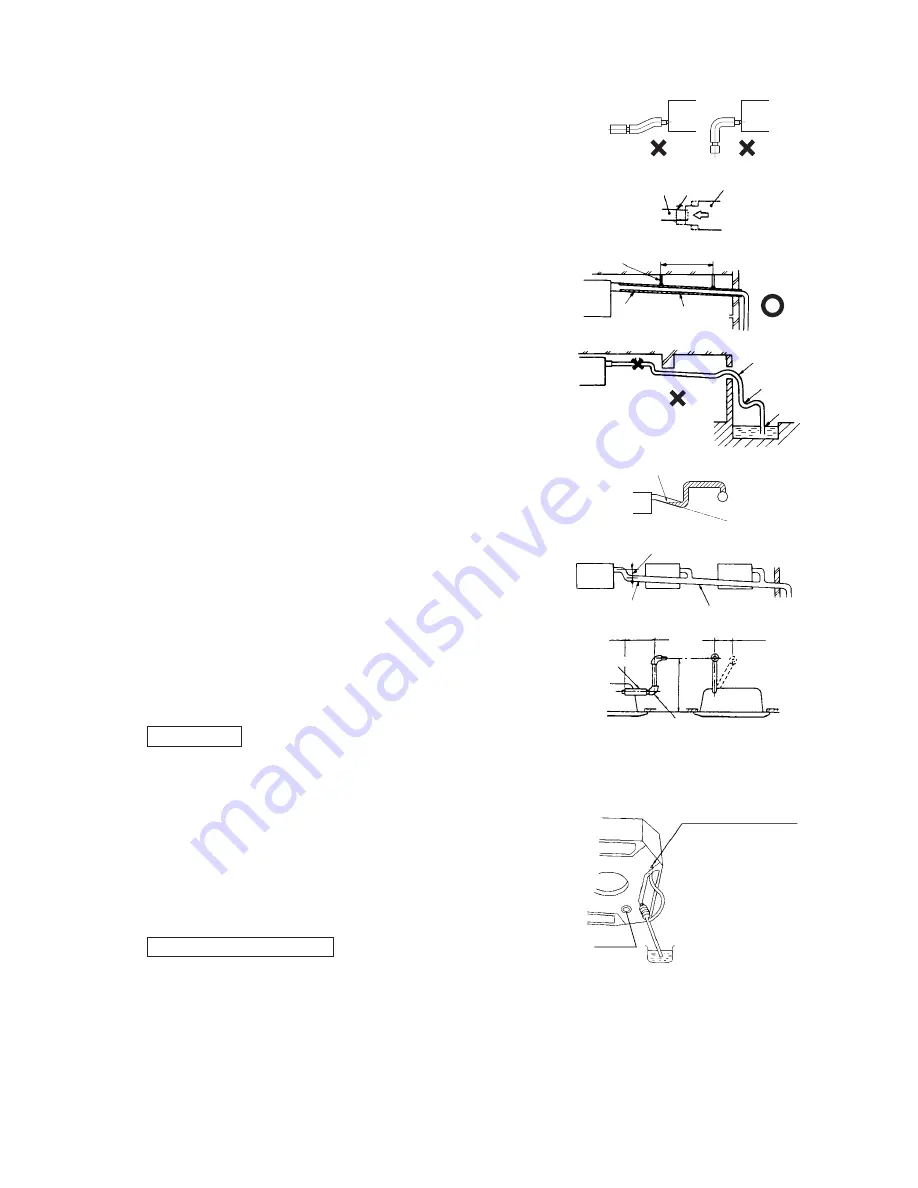
-
187
-
Drainage test
Check that water is draining thoroghly during test run, and that there are no water leaks from the joints and the drain pan.
The test has to be performed even if the unit is installed in the season when the unit is used for healting.
In a new house, perform the test before the ceiling is fitted.
•
Using a water pump, pour about 1000 cc of water to the drain pan through the
blowing outlet.
•
Check the transparent drain-out section of the drain hose for normal fl ow of
drainage.
* While observing the noise from the drain motor, test drain operation.
•
Take off the drain plug to release the water. After the water is drained, place
the drain pulg back where it was..
* Be careful not to get splashed when pulling the drain plug.
Forced drain pump operation
♦
Set up from a unit side.
Turn DIP switch SW9-3 on the indoor unit’s PCB ON, then after disconnecting the remote control’s communications line
CnB connector, turn the power ON again.
After the test, be sure to turn off the DIP switch. Also restore the remote control communications line’s CnB connector to its
original condition.
(When electrical work is not completed, connect a convex joint to the drain pipe joint area, arrange an inlet and check leaks
and drain connections of the pipe)
Put the tip of the feed water pump
in the drain pan of the unit body
Drain plug
3) Care must be taken so as not to allow an adhesive to run into the drain hose. When
it is hardened, it can cause a breakage of a fl exible part, if the fl exible part receives
stress.
4) Use VP-25 general-purpose hard PVC pipes for drain piping.
5) Insert the drain hose supplied as an accessory (soft PVC end) to the stepped part
of the unit’s drain socket and then fasten it with the clamp also supplied as an ac-
cessory.
6) Adhesive must not be used.
a) Glue a VP-25 joint (to be procured locally) to joint it with the drain hose (hard
PVC end) and then glue a VP-25 (to be procured locally) to the joint.
b) Give the drain piping a descending grade (1/50-1/100) and never create a bump
to go over or a trap.
c) In connecting drain pipes, care must be taken so as not to apply force to the
unit side piping and fi x the pipe at a point as close to the unit as possible.
d) Do not create an air vent under any circumstances.
e) When drain piping is implemented for more than one unit, provide a collect-
ing main about 100 mm below the units’ drain outlets from which it collects
drain. Use a VP-30 or larger pipe for a collecting main.
f)
Do not fail to provide heat insulation at the following two points because they
can cause dew condensation and a resultant water leak.
7) Drain
socket
After a drain test is completed, apply a pipe cover (small: accessory) onto the drain
socket, cover the pipe cover (small), the clamp and part of the drain hose with a
pipe cover (large: accessory) and wrap it with a tape completely without leaving
any gaps.
(Cut pipe covers into appropriate shapes)
8) Hard PVC pipes laid indoor
a) Since a drain pipe outlet can be raised up to 600 mm from the ceiling, use
elbows, etc. to install drain pipes, it there are obstacles preventing normal drain
pipe arrangement. When the drain pipe is raised at a point far from a unit, it
can cause an overfl ow due to a back fl ow of drain upon stoppage, so arrange
piping to keep the dimensions specifi ed in the illustration shown on the left.
b) Install the drain pipe outlet where no odor is likely to be generated.
c) Do not lead the drain pipe into a ditch where the generation of harmful gas
such as sulfuric gas or fl ammable gas is expected. A failure to observe this
instruction may cause such harmful or fl ammable gas to fl ow into the room.
Drain hose piece
Stepped
part
Drain socket
1.5 m ~ 2 m
Suspension
bolts
Descending slope
greater than 1/100
Insulation
material
No bump
Air vent
No trap
Not
touching
the water
As wide as possible
(about 100 mm)
VP30
Joint for VP-25
(not included)
Descending slope
greater than 1/100
295 ~ 325 mm
100 mm or less
Drain hose
600 mm or less
Trapped air will
generate noises.


